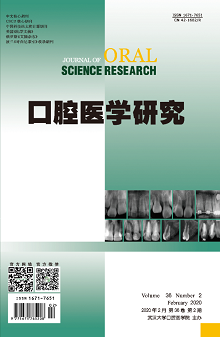|
|
Effects of Dexmedetomidine on Stress Reaction and Awakening Quality in Children with Dental Caries under General Anesthesia
LIU Guang, LIU Zhina, ZHANG Ling, JIN Hongquan, WANG Xiaodan, QIAO Weina, SANG Hongyang
2020, 36(2):
181-184.
DOI: 10.13701/j.cnki.kqyxyj.2020.02.021
Objective: To explore the effects of dexmedetomidine on the stress reaction and awakening quality in children with dental caries under general anesthesia. Methods: 64 pediatric patients undergoing elective dental treatment under general anesthesia (aged 3~6 years, ASA grade Ⅰ) were randomly divided into two groups (n=32) using a random number table: dexmedetomidine group (group D) and control group (group C). Group D received 0.5 μg/kg dexmedetomidine at the beginning of anesthesia induction for 15 minutes, and then continued to pump at the rate of 0.4 μg·kg-1·h-1 until 30 minutes before the end of operation. In group C, normal saline was pumped in the same way. HR, MBP, Cor, NE, and Glu were recorded before anesthesia, 1 hour after the operation, at the end of operation, and at the time of awakening. Time of operation, total dosage of propofol, time of spontaneous breathing recovery, time of extubation, Ramsay score, FLACC score, and PAED score were recorded. Results: There was no significant difference in HR and MAP between groups at T0 (P>0.05). HR and MAP in group D were significantly lower than those in group C at T1, T2 and T3 (P < 0.05). There was no significant difference in Cor, NE, and Glu between two groups at T0 (P>0.05). Cor, NE, and Glu in group D were significantly lower than those in group C at T1, T2, and T3 (P < 0.05). There was no significant difference in recovery time of spontaneous breathing and extubation time between two groups (P>0.05). Compared with group C, the total dosage of propofol, Ramsay score, FLACC score, and PAED score in group D were significantly lower than those in group C (P<0.05). Conclusion: Continuous infusion of dexmedetomidine during general anesthesia for children with dental caries can stabilize perioperative hemodynamics, reduce stress reaction, and improve awakening quality.
References |
Related Articles |
Metrics
|

